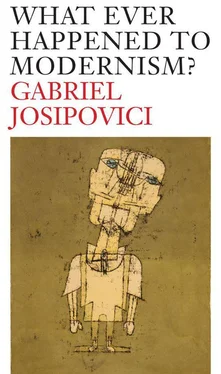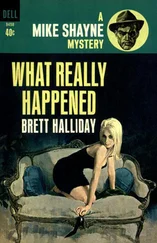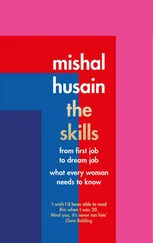The focus on the inward thus leads to the development of plot, the manipulation by the dramatist of the audience through the introduction of unexpected twists and reversals. In Iphigeneia in Tauris Euripides develops the legend that Agamemnon's daughter was transported by Artemis at the moment of sacrifice to the Asian land of Aulis and a deer put in her place. Iphigeneia is now the priestess of Artemis and in charge of sacrificing to her any Athenian youth found in the land. Orestes and Pylades, who have come to Tauris to steal the statue of Artemis, are discovered and brought before Iphigeneia to be sacrificed. The first half of the play ends with brother and sister eventually recognising each other. This would have been enough to fill a whole play by the two older dramatists, but for Euripides it is just the start. The second half consists of the successful carrying out of the plot hatched by Iphigeneia to get all three of them and the statue out of Tauris and en route to Athens.
This is more like the kind of play we are used to. Not just because seventeenth- and eighteenth-century dramatists and opera librettists turned more often to Euripides than to the other two, but because it's more like the kind of drama we see coming out of Hollywood and on our television screens every night. How exactly does it differ from Aeschylus and Sophocles? First of all, there is no longer any need for the mask. Indeed, masking is a positive hindrance, since so much in these plays turns on the contrast between appearance and reality, or on the nuances of doubt and uncertainty. Jones puts it this way: Sophoclean privacy has been replaced by Euripidean inwardness, which gives us our modern category of the subjective. ‘When Orestes saw the Furies in the Oresteia ’, he says, ‘he was not experiencing an hallucination: he was polluted. But when the Euripidean Orestes thought he saw the Furies ( Orestes , 408), he knew that his guilty ‘conscience’ (396) lay at the back of the apparition. At the same time Euripides’ new interest in human beings and his new fascination with plot brings with it a failing confidence in praxis , action. This is what Kierkegaard was after when he said: ‘In ancient tragedy the action itself has an epic moment in it; it is as much event as action.’ What he meant was that in the Agamemnon or the Oedipus at Colonus we witness essentially a single event: the return home and murder of Agamemnon; the arrival at Colonus and going to his death of Oedipus. It unfolds slowly before us, each moment having the same weight as every other; when the event has been explored from all sides, as it were, the play is over, leaving us with that double experience of pity and sorrow, calmness and joy, which Kierkegaard and Jones explore so well. In Iphigeneia in Tauris , on the other hand, as in most of Euripides, as in the modern drama against which Jarry, Brecht, Beckett and Ionesco were reacting, we witness the author's manipulation of plot to create exciting theatre, driving towards its (surprising and often unexpected) conclusion. ‘Clearly defined terminal climax, so impressively absent in the older drama’, concludes Jones, ‘becomes a felt need in Euripides.’
What has all this to do with Modernism? Well, if I'm right and Modernism is a response to the simplifications of the self and of life which Protestantism and the Enlightenment brought with them, in return of course for many impressive achievements, then it has everything to do with it. In Euripides we can see emerging precisely those elements that were to form the pillars of art from the Renaissance on: an emphasis on the subjective self and on complicated plotting; a new emphasis on realism; a fascination with those on the margins of society; and a replacement of the sense that it is what we do that defines us by the notion that it is who and what we are that does so. Of course Euripides' work is only symptomatic, one example among many, but, as Nietzsche understood, these transitions happen many times in the history of a culture. We could have looked at Plato and his overturning of the Homeric ethos, as Eric Havelock has done in his brilliant A Preface to Plato ; or at the way St Paul subverts the Jewish tradition he claims to be upholding, as I tried to do in my book on the Bible. But the contrast of Euripides with the other two tragedians of ancient Athens whose work has come down to us helps us to see some of the elements that make up the Modernist enterprise and what it is struggling against in a fresh light. And if there are other exemplary moments in what we might, in a convenient shorthand, call the transition from privacy to subjectivity, there are also many other examples of what we have found in the older Greek tragedy, some of them much closer to us in both time and space.
In Book III of the Iliad Helen, looking down from the walls of Troy at the Greek army assembled below, searches in vain for her two brothers, Castor and Pollux, ‘but the two marshallers of the host can I not see’, she says,
Castor, tamer of horses, and the goodly boxer Polydeuces, even mine own brethren, whom the same mother bore. Either they followed not with the host from lovely Lacedaemon, or though they followed hither in their seafaring ships, they have now no heart to enter into the battle of warriors for fear of the words of shame and the many revilings that are mine. (III, 236–42)
‘So she said’, says the narrator. ‘But’, he goes on, explaining the real reason why she does not see them, ‘they ere now were fast holden of the life-giving earth there in Lacedaemon, in their dear native land’ (243–4). They do not appear not because they are ashamed to fight, given what their sister has done, as she imagines, but because they are dead. Except that the poet does not quite say that, he says that the earth, which is the giver of life, now holds them in its embrace; and not anywhere, but in the one place where everyone wants to be buried, their dear native land, ‘lovely Lacedaemon’. The effect, as Kierkegaard and Jones said of Greek tragedy, is at once immensely sad and deeply satisfying. A rhythm is asserted which encompasses both Helen and her brothers, life and death, seen as part of the one thing.
This remarkable laconic mode of writing, which is so moving precisely because it eschews the psychological, can also be found much nearer to our own time. Take these central stanzas from one of the greatest of the Border Ballads, that wonderful body of work which flourished in the North of England and the Scottish Lowlands in the fifteenth and sixteenth centuries, ‘The Ballad of Sir Patrick Spens’:
‘Mak haste, mak haste, my mirry men all,
Our guid schip sails the morne’;
‘O say na sae, my master deir,
For I fear a deadlie storme.
Late late yestreen I saw the new moone,
With the auld moone in hir arme,
And I feir, my deir master,
That we will cum to harme.’
O our Scot nobles wer right laith
To weet their cork-heild schoone;
But lang owre a' the play wer playd
Their hats they swam aboone.
O lang lang may their ladies sit,
Wi thair fans into their hand.
Or eir they se Sir Patrick Spens
Cum sailing to the land.
A terse exchange sets the scene and conveys that sense of foreboding which is a central element in these ballads; and then in one extraordinary stanza everything happens: we first see the fastidious Scottish nobles high-stepping to keep their shoes dry as the sea starts to cover the decks (but that bit is not stated, we have already been given all the information we need to imagine it), then a mere two lines are required to describe, from some position outside both human time and space, the whole expedition and the storm as a cosmic play or game, and to present us with the stark image of the noblemen's hats afloat on the water, the only remaining sign of the ship and its occupants. Finally, as in the biblical Song of Deborah, we switch to the wives and mothers waiting for the men to return, but waiting, of course, in vain.
Читать дальше












